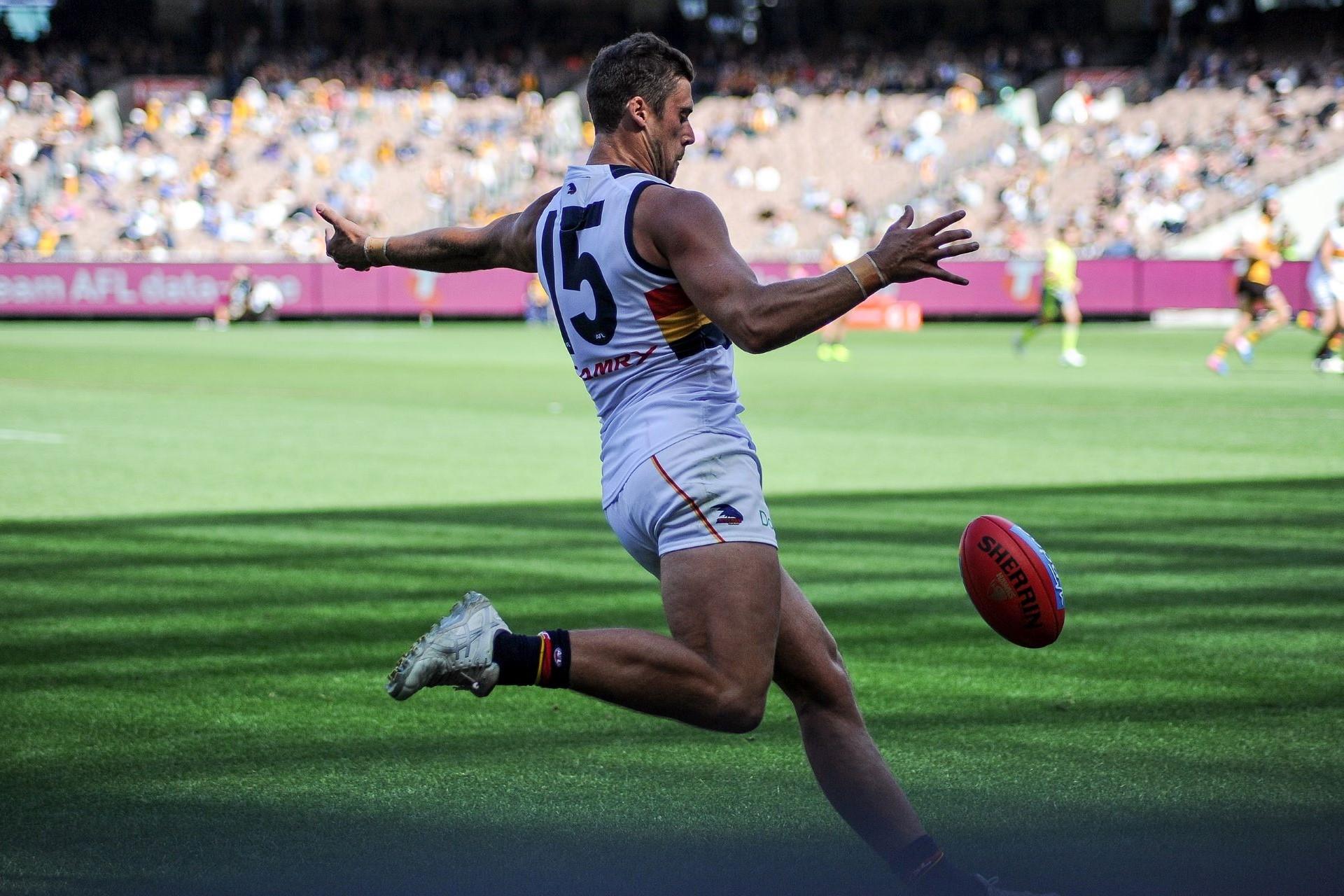To an outside observer, footy or Aussie rules certainly looks exciting. However, if you don't know the rules, it's impossible to tell who's winning, whether something is good or not, and even the score.
Here, we'll quickly explain the key rules of Australian Rules Football so you can start watching it and, most importantly, enjoy it!
Ready?

The Objective of Footy
For anyone completely new to footy, the objective in Australian Rules Football is straightforward: to score more points than your opponent. You score points by kicking an egg-shaped ball through either the two large posts or between one of the large posts and one of the shorter posts. It's that simple!
There are four goalposts at either end of the field. Two taller posts are in the centre of the goal area, and one shorter post is on each side of each taller post, for a total of four goalposts.
Goals
Two goal posts are positioned 6.4m apart at each end of the playing field. A further two posts, called behind posts, are placed on each side of the goal posts. A kick between the two large posts is a goal worth six points.
Behinds
A kick that hits the goal posts or goes between it and one of the behind posts is called behind and is worth one point.
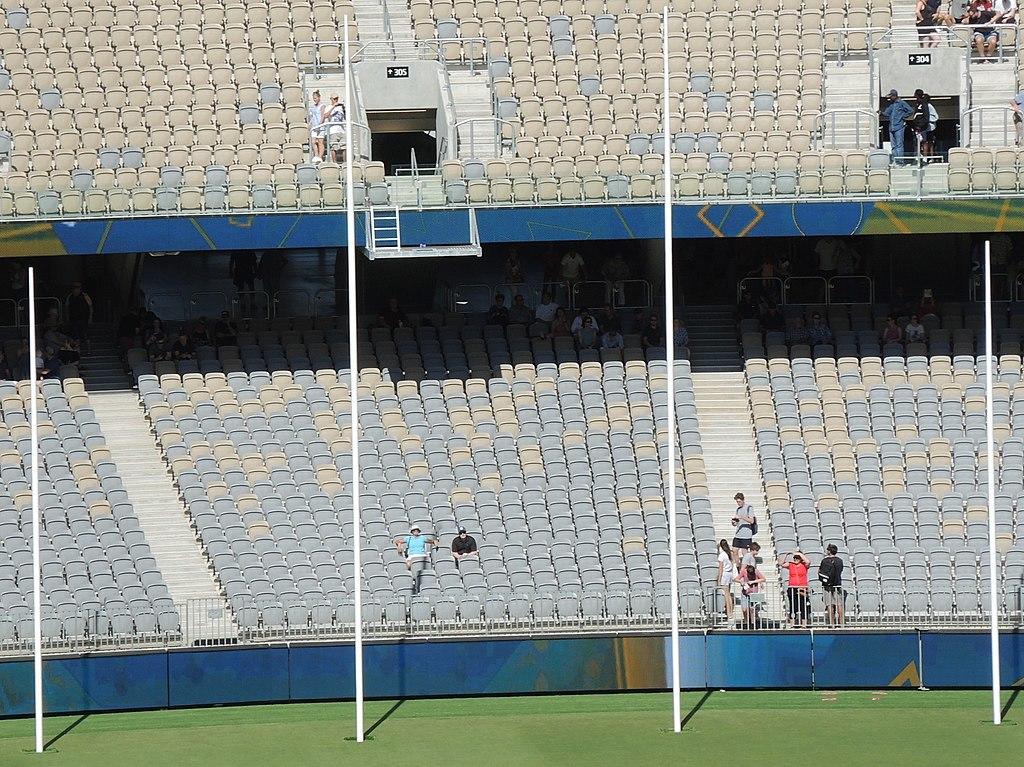
The Score
If you look at the score on TV, a match, or online, you'll see three numbers for each team. These are always goals, behinds, and total scores.
For example:
- Bulldogs: 9.8 (62)
- Hawthorn: 14.15 (99)
In some instances, these numbers are displayed in separate boxes in the same order, with the total score larger than the other numbers.
Goal: 6 points
Behind: 1 point
Goals + Behinds = Total Score
The Aussie Rules Playing Field
An Aussie rules match is played on an oval field between 135 and 185 metres from goal to goal and between 110 and 155 metres from wing to wing.
- At either end of the field, there are goal lines measuring 19.2 metres (21 yards), with both the goal posts and the behind posts on this line.
- There is a goal square, 6.4 metres by 9 metres, in front of each goal.
- There are also two large curved lines on the pitch. Each is a 50-metre (55-yard) arc from the centre of the goal line. One is red and white, while the other is blue and white. These dictate starting positions for forwards and centres at the centre bounce.
- In the centre of the field, there's the 50-metre by 50-metre centre square. Within the centre square are the centre circles, one within the other. These are also used to indicate player positions during the centre bounce.
For viewers new to Aussie rules, the only lines that matter are between the goalposts and behind posts.
If you're wondering about why the pitch is an oval. It might have something to do with the history of footy, with the sport beginning as a way for cricketers to say fit during the winter.
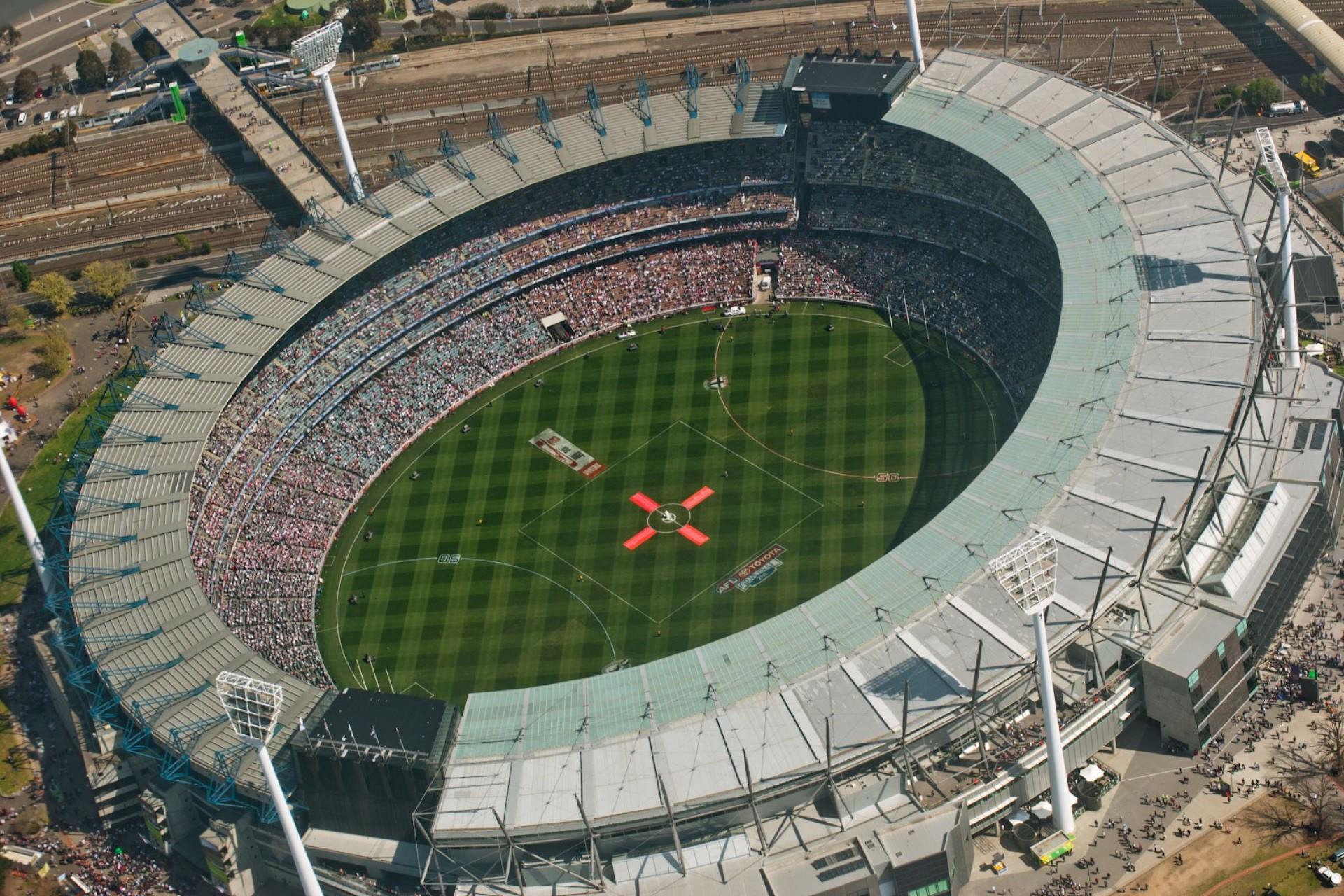
Aussie Rules Equipment and Uniform
The equipment and uniforms players wear, unique to Aussie rules, include the ball and what the players wear.
The Football (Sherrin)
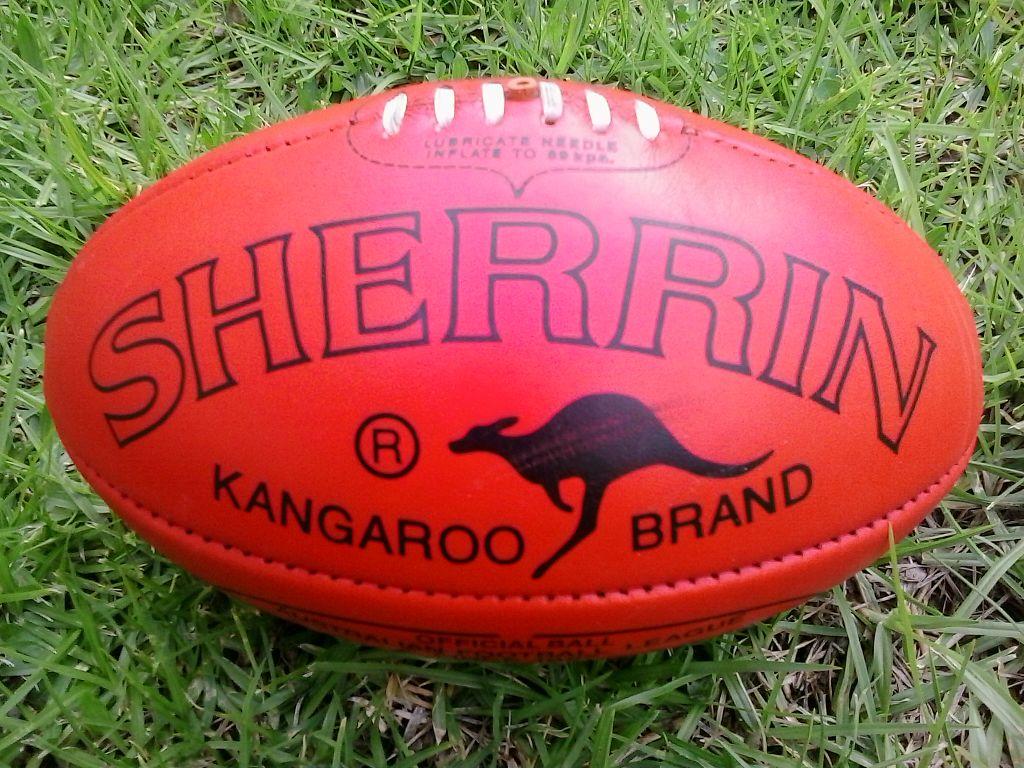
The boal is an oval-shaped leather football, often called a "Sherrin" after the company that makes it.
The size of the ball typically varies according to the level of the sport. Younger players and the women's game use a smaller ball.
The AFL uses a "size 5" ball slightly larger than a rugby ball.
Guernsey
The top worn by AFL players is called a guernsey. Like a basketball top, it doesn't typically have sleeves. It is usually made of a tougher material than a basketball top since Aussie rules is more physical and violent.
Unlike many other sports, Aussie rules players don't have their names on their guernseys.
A "guernsey" gets its name from the island of "Guernsey" in the English Channel, much like a "jersey" named after another of the Channel Islands.
Shorts
Aussie rules players wear lightweight, flexible shorts. Teams usually wear dark-coloured shorts for home matches, while away teams wear white or lighter-coloured shorts.
Socks
Footy players wear long socks matching the teams' guernsey colours.
Boots (Cleats)
Australian Rules Football players wear boots with moulded or screw-in studs, similar to those worn for soccer in many ways.
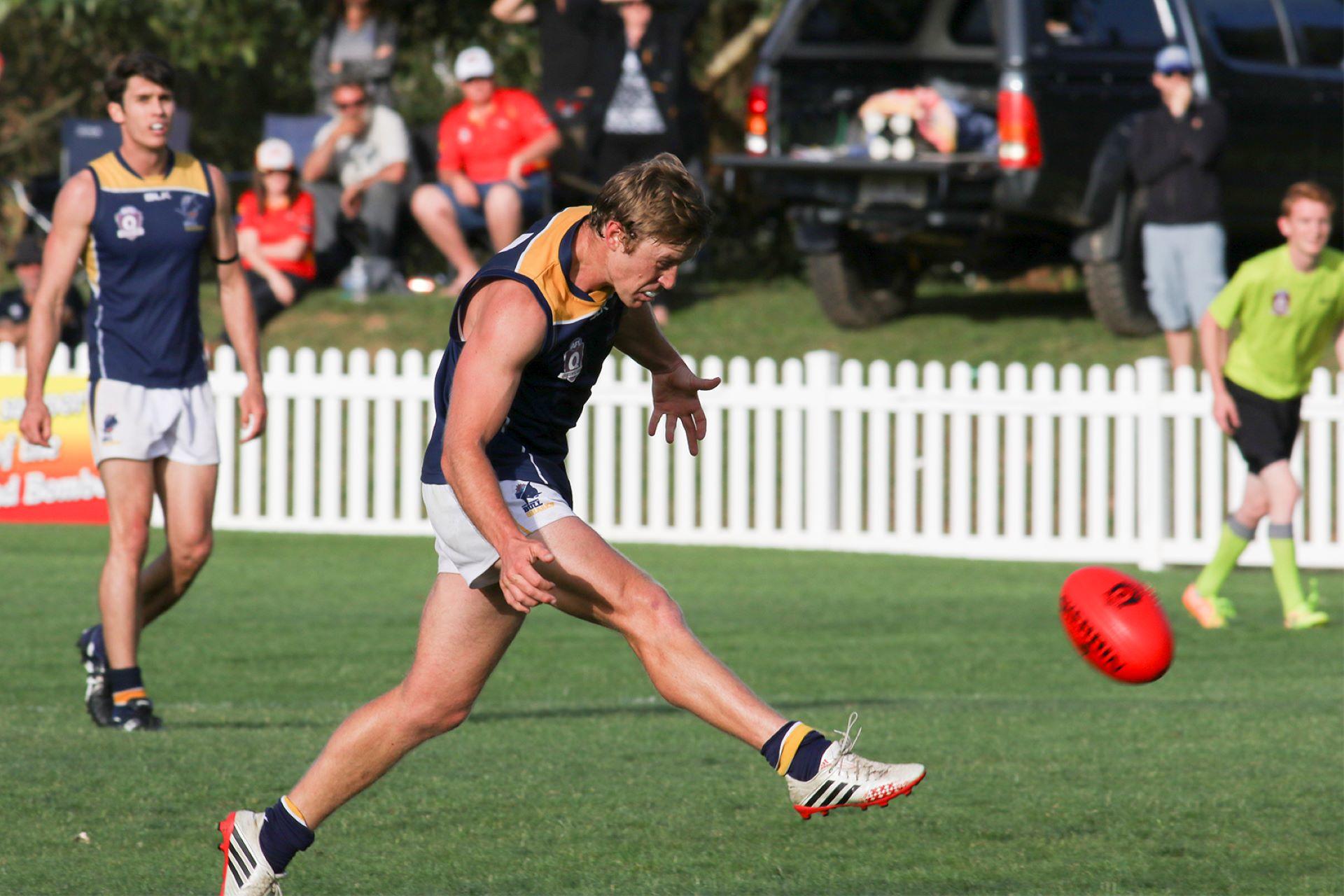
Protective Gear
Aussie rules is an aggressive contact sport, but players wear very little protective gear.
- Players typically wear mouthguards to protect their teeth, but these aren't obligatory.
- Soft, padded helmets are sometimes worn by players recovering from serious injuries but aren't compulsory.
- Gloves can also be worn but are usually only chosen for specific weather conditions where more grip on the ball may be required.
- Certain players wear thin shoulder pads or rib protectors. Again, none of this is required.
Footy Teams
A team in Australian Rules Football consists of 18 players and 4 replacements, known as interchange players. Players can be freely interchanged throughout a match.

Moving the Ball in Footy
In Aussie rules, players enjoy a wide range of movement options. They can move the ball by kicking, handballing, or running, giving the game a dynamic and exciting feel. Admittedly, they have to do this while 18 other players try to tackle them.
The game, in part, originated from an Aboriginal game called Marn Grook, where spectacular kicks and catches were the name of the game. This is still true today, with many great Indigenous AFL players, too.
Handballing
In Aussie rules, you cannot throw the ball to a teammate. However, you can punch the ball out of your hand to a teammate.
Running
To run with the ball, the player can hold it in their hands, bouncing it or touching it to the ground every 15 metres.
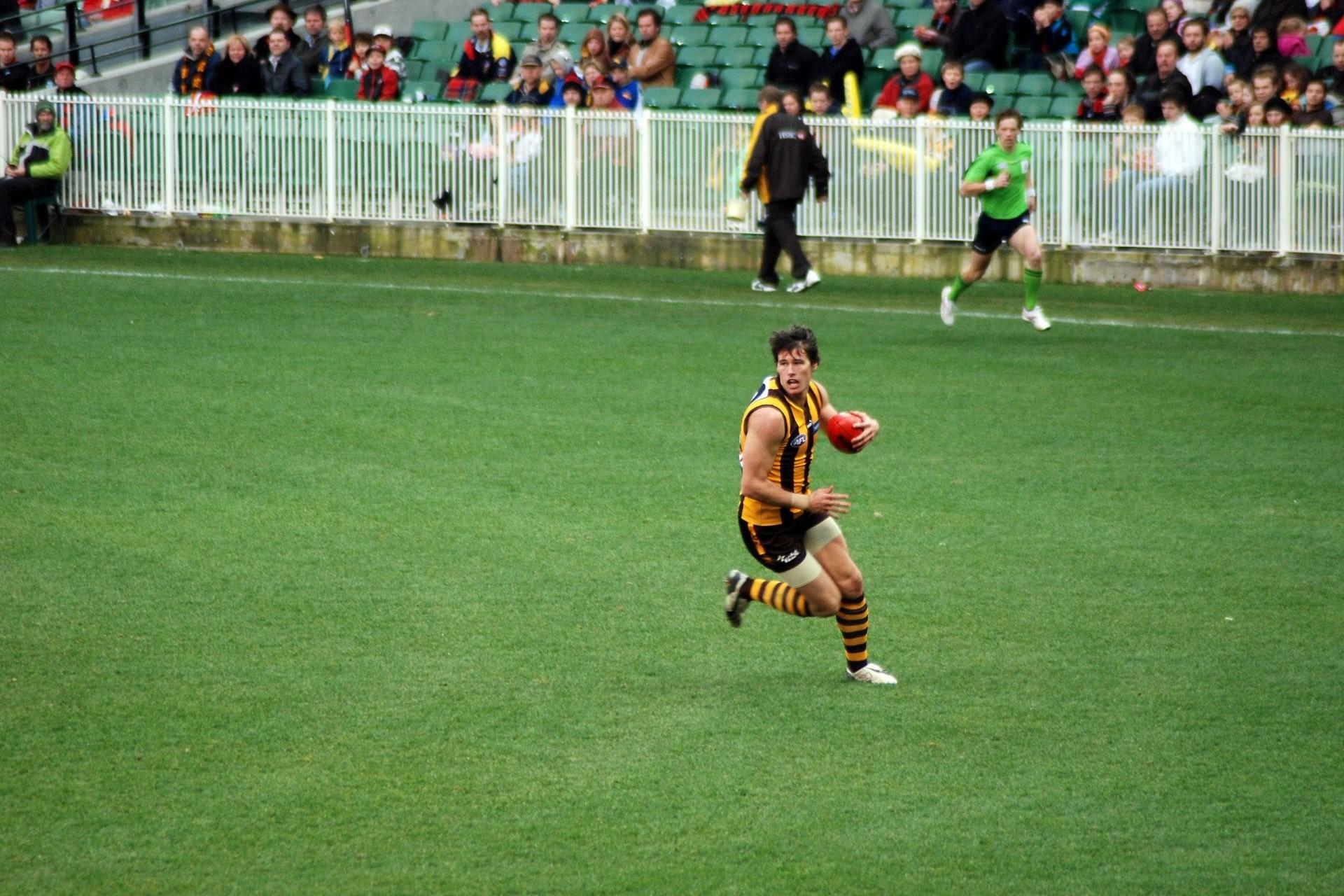
Kicking
A player can kick the ball to a fellow teammate.
Mark
If the ball is kicked over 15 metres to a teammate without touching the ground and the receiving player catches the ball cleanly, this is called a mark.
In this case, the player can either "play on" by running with the ball or taking a free kick from where they caught it. The referee blows a whistle to indicate a successful mark.
Speccy
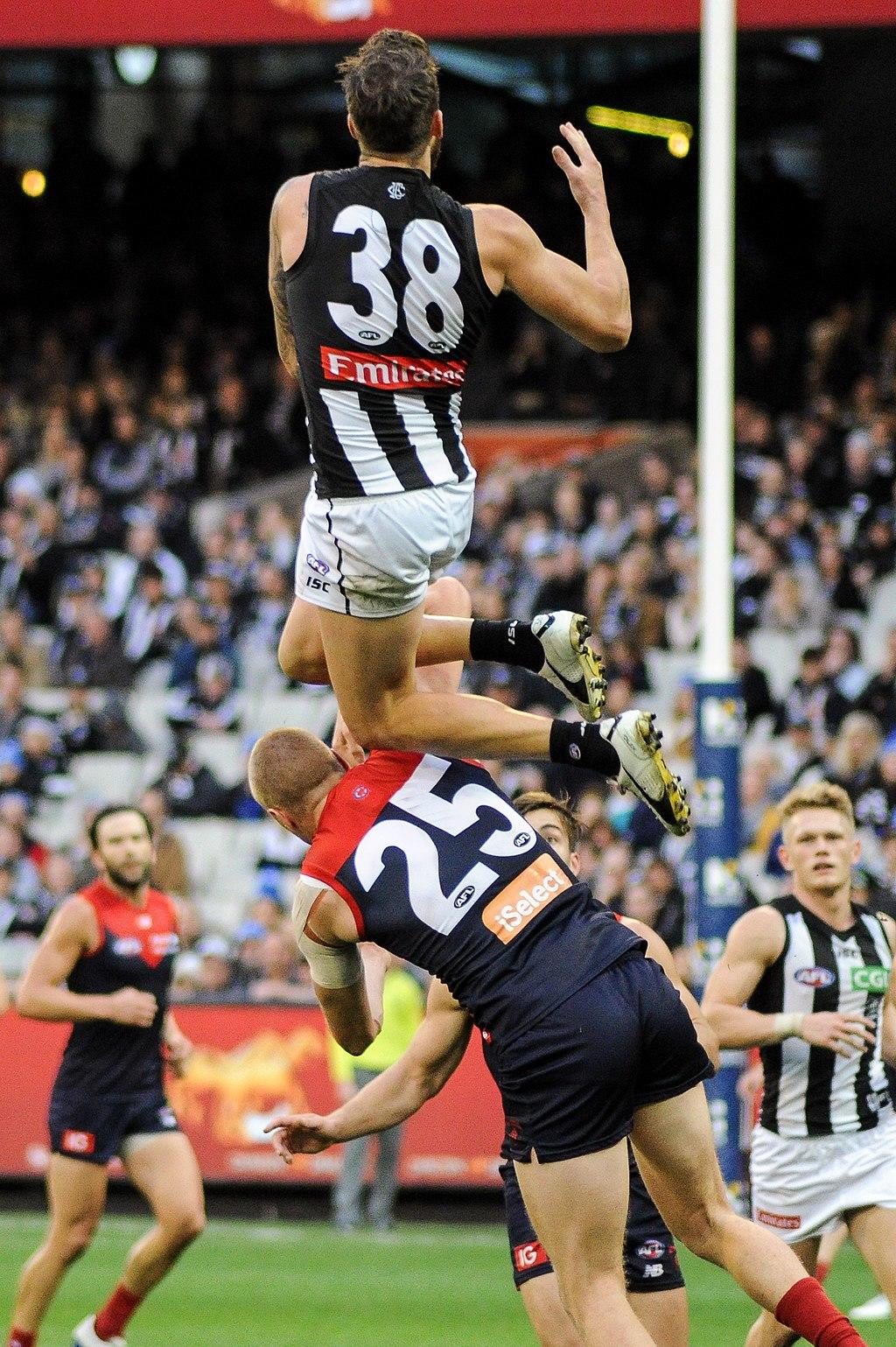
A "speccy" or "spectacular mark" in Australian football involves a player leaping onto the back of another to catch the ball. It's legal and celebrated for its athleticism.
The player being jumped on is often referred to as the "stepladder" or "springboard," serving as the platform for the airborne mark.
The word "speccy" comes from "spectacular mark".
This is one of the most exciting parts of Aussie rules, where players leap high into the air, using their opponents to make even higher catches.
You won't see anything like this in other sports!
Defending in Footy
The team without possession of the ball can attempt to retrieve it from the opposing team in multiple ways.
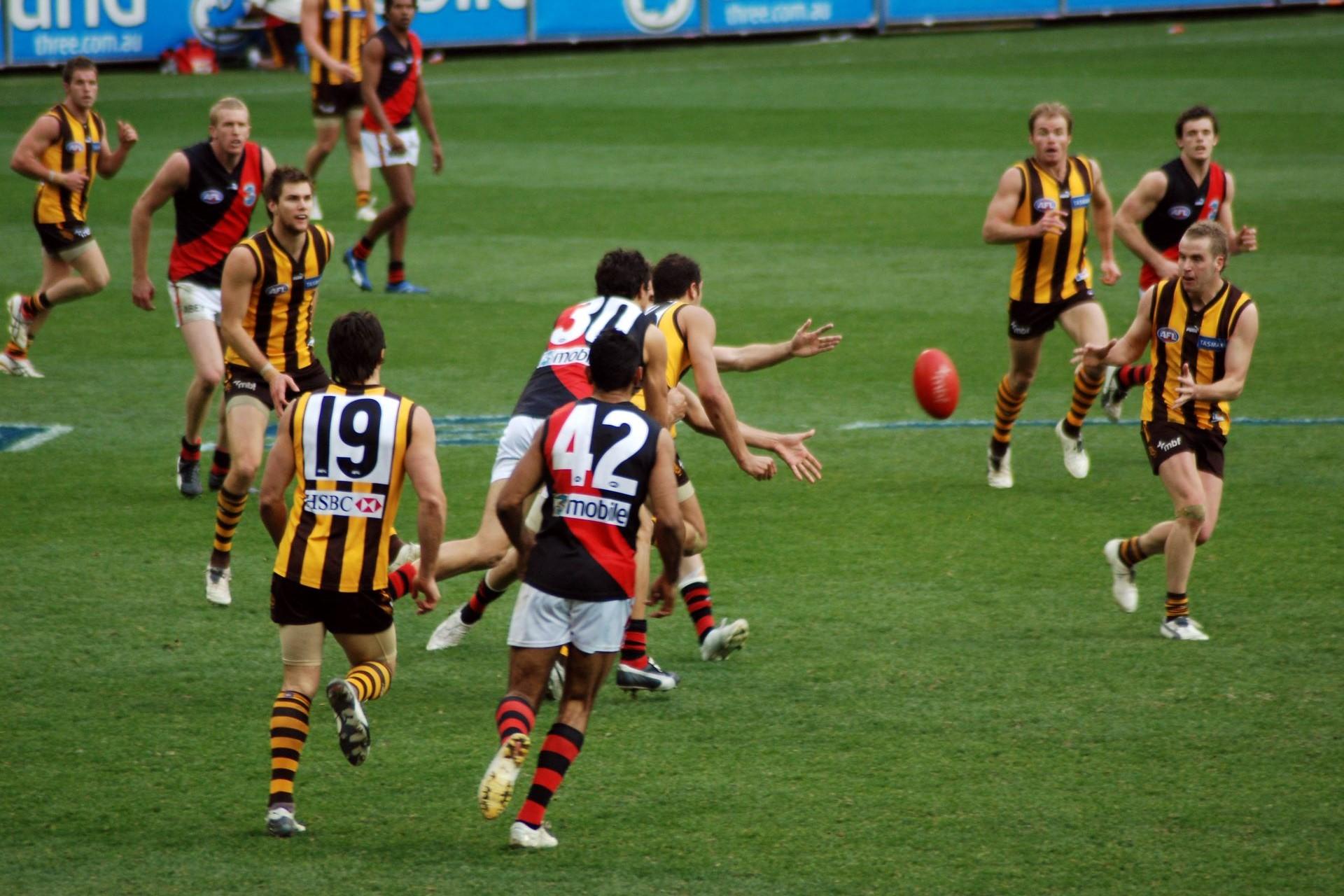
Tackling
Players can tackle a player with the ball.
Tackles must be between the opposing player's shoulders and knees. Players are penalised for tackling too low or too high.
When a player is tackled, the player must dispose of the ball by either handballing or kicking the ball. Otherwise, they will be penalised for holding the ball.
Spoiling
In Aussie rules, spoiling is punching a ball away from a mark and attempting to catch it. It's similar to intercepting in American football.
Bumping
A bump is when a player makes contact with an opposing player using their body, usually the hips or shoulders. They often do this to dislodge the ball from an opponent, protect their own teammates, or disrupt an opponent's movement. Much like with a tackle, bumping must be done between the shoulders and the knees and cannot be too high or too low.
Smothering
Smothering is the act of blocking the kicking player's kick. This is often done by leaping towards the opposing player and using the hands, arms, or upper body to block the ball. This requires excellent timing and is often done athletically, like a soccer goalkeeper diving to save a shot.
Here's a quick video explaining footy.
How Long Does a Footy Match Last?
A footy match is divided into four 20-minute quarters.
Much like with soccer, time is added to the end of quarters for the time lost when the ball is out of bounds and other stoppages in play. This added time is called “time on”.
When Is the Footy Season?
Typically, there's the pre-season in February and early March before the regular season begins. The regular season starts in late March and runs until late August or early September.
There are 23 rounds, with each team playing 23 matches. Every team has one bye week during the season where they won't play.
Aussie Rules was invented to keep cricketers fit during the winter, which is why footy seasons are during the winter.
Footy is often played on modified cricket pitches and in stadiums that host both cricket and footy matches.
League Format
The top 8 teams at the end of the season will qualify for the finals series, a knockout competition to crown the Grand Final winner, something that all the best AFL players are striving to achieve.
There are four weeks of matches in the following order:
- Qualifying Finals
- Elimination Finals
- Semi-Finals
- Preliminary Finals
- Grand Final
Where Can I Watch AFL?
If this sounds like a lot of fun and something you'd be interested in watching, there are many ways to get involved and watch. After all, the AFL is a big-money sport thanks to sponsorships and media deals, which is why the highest-earning AFL players can earn over $1 million a year.
The best way is to watch on Free-to-Air Television (Channel 7). Seven Network has exclusive free-to-air broadcasting rights to AFL matches. It includes selected games each round, most Thursdays and Fridays, and weekend marquee matches.
On pay TV, Fox Footy Channel 504 (Foxtel) also broadcasts all matches that aren't broadcast on Channel 7. You can watch on the Fox Footy AFL channel or the Foxtel Go app.
Streaming services offer AFL, including Kayo Sports, 7plus (Channel 7's free online streaming service), and the AFL Live Official App.

